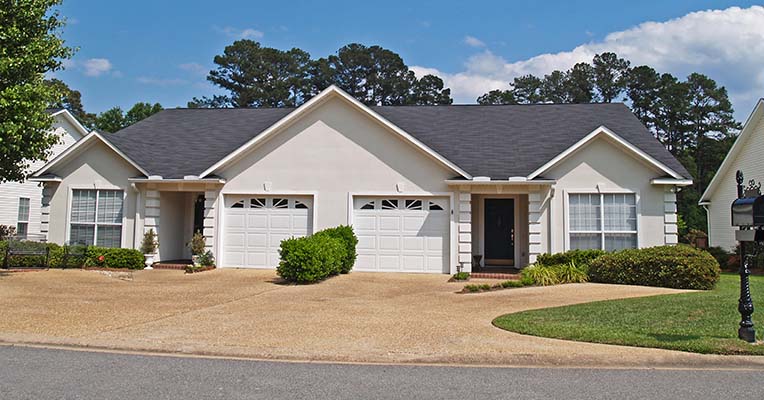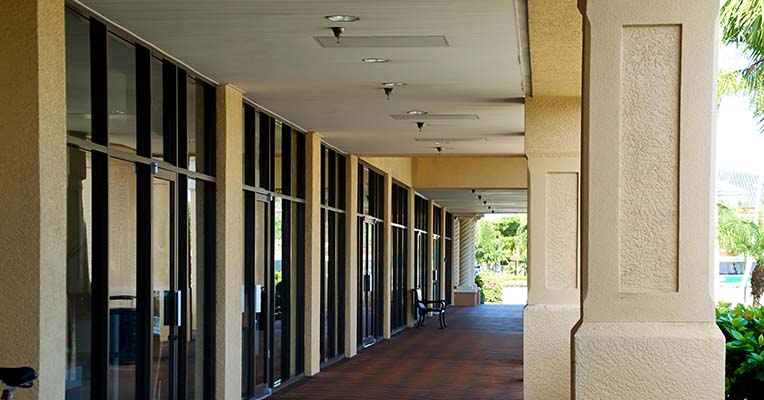Looking for help?
If you think you may need a submetering solution, call us. We provide free estimates and recommendations.

What is gas submetering?
Most people know that gas appliances such as furnaces, water heaters, and cooking ranges, are used in many homes and businesses around the country. Well what happens in multi-tenant facilities? How do you bill each tenant for the gas they consume?
Natural gas submetering is based on the concept of measuring the natural gas used in each individual unit of a multi-tenant facility. A gas meter is installed on the gas line going to each individual unit in order to separately measure the usage of each individual unit in a multi-tenant facility. This allows for the billing to be separated out by the exact usage of each tenant.
"Installing a submetering system allows a property manager... to bill units individually for their share of the utilities. Submetering can be installed for all kinds of utilities, including water, gas, and electricity."
What are the benefits of gas submetering?

The benefits of submetering are the same whether you are installing submetering on natural gas, electricity, or water. However, those benefits vary depending on you position in the landlord-tenant relationship.
In general, gas submetering helps: lower gas consumption, decrease utility bills, and provides billing relief to property owners, landlords, and building owners.
What properties can have gas submeters?
Properties that use natural gas as a part of their utility solution typically have some form of a master meter that has been installed by the utility company. This allows for the property owner to know how much gas has been used throughout the entire property. Properties that have only one tenant or resident, do not need any more separation than this.
The submeter system can typically be installed in any type of commercial or residential multi-tenant facility. Properties that have multiple tenants who need separated billing will typically need a submeter system. Submeter systems can also be installed in facilities that have a need to measure consumption across common areas or for specific appliances, equipment or sub-systems that are high-use in nature.
What is RUBS billing and does it help?
A RUBS billing system can help in multiple ways. Just like the submetering system as a whole, the benefits are different depending on whether you are a tenant or the property owner, landlord, or property manager.
A Ratio Utility Billing System (RUBS), is a system that provides separated billing services in condominiums, apartment complexes, landlord-based commercial property agreements, and even industrial applications within a commercial facility.
The RUBS billing system provides a huge benefit to the landlord. It provides the landlord a way to eliminate time they would normally spend separating out the utility billing from the utility company, as well as the headaches involved with this inherently unfair practice. Let's face it landlords simply prefer not to waste time arguing over energy costs with each building occupant.
The RUBS system helps each building occupant, in a far greater way. The most obvious is the fair "consumption-based" utility cost passed on to the occupant based on their individual usage and not a flat rate evenly split between all tenants. Another benefit is the energy conservation that is inherent in utility submetering.

When an individual tenant is billed on a flat rate system they are potentially being asked to pay for utilities that were used by a different tenant's unit. This is especially true if one tenant is practices extreme energy conservation but their facility neighbors do not. Only the occupants using higher energy levels will experience a cost savings. This is a result of the lower energy-using clients sharing the expense of high utility usage.
When condominiums, apartment communities, or other multi-tenant facilities put individual meters on each individual unit or common area the lower energy-using occupant will experience a cost savings due to their energy conservation practices.
Are there gas submeter regulations?
Regulations and ordinances vary not only based on the type of utility in question but also on the individual utility provider, number of occupants in a facility and also from locale to locale, whether it is state, county, city, or municipality.
This is especially true in states where there are typically more stringent rules on utility and water consumption, such as California. In fact, since 2018 it has been a requirement for all new construction of multi-family buildings to include water meters and water submeters. Other states may not have requirements for submeters to be used on the properties, however, they have regulations regarding the installation and use of electric submeters, water submeters, and gas submeters.
Gas submeter installation
Installing a submeter system for natural gas in landlord-operated buildings is simply the right thing to do from a landlord perspective. However, in order to complete the task you need to determine the best time to install the system. Landlords or property owners will need to determine whether it is best to install them during construction of a building or after the building is completed. Either way there will be costs for the landlord or property owner and it is best to understand how the timing can affect the cost.

Gas Submetering solutions for new construction
It may seem obvious to some that the best option is to simply install the submeter system during the construction phase of a building. This makes installation of equipment such as individual meters for each unit easier since the access is greater.
Whether it is your gas service, electric service, or water service it is ideal to have the submeter suppliers install individual meters on the systems prior to the utility company performing their final master meter installation and connection. This guarantees from the beginning that all service from the utility provider that runs through the master meter is also running through the individual meters and can be measured and billed to the appropriate unit.
Gas Submetering solutions for existing construction
IInstalling a gas submeter system on an existing structure typically involves some form of retro-fitting especially if the building is older construction. The service line or lines that have been installed in older systems can be different that more modern systems and as a result there is a need to make the new components fit the older lines. This process is called retro-fitting.
Gas submeter installation cost
Since the job of a landlord is to run an effective and profitable business, it is important for them to consider the costs associated with installing a submetering system. Obviously the costs to the landlord will be offset by the time they save in billing individual tenants themselves, as well as the headaches associated with it.
It may not be obvious to some but there are potentially more costs associated with retrofitting older systems than installing submeters in new construction. To elaborate, if a condominium is being constructed and a decision is made to hold off on the installation of the submetering system until a later date, the landlord or property owner have made a decision to potentially incur additional costs at that time. Once the lines are connected and flowing the utiltiy (gas, water, or electric service), the installation company will be required to temporarily shut off of and/or disconnect the service and disconnect each individual service line prior to installing the individual submeters on the other side of the master meter. Once the installation is complete, of course, they will then need to reconnect the service and turn it back on.
This additional work requires additional time and thus incurs additional costs. Conversely, if the landlord or property owner performed the installation prior to the connection of the master meter and utility service, the installation company simply needs to connect the submeters to each individual unit service line and be done with no extra time spent disconnecting and reconnecting or even shutting off the gas, water, or electric service.
Gas submetering companies
There are three basic types of water submeter companies apart from the manufacturers of the submeter products. These are: Water submeter installation companies, Water submeter maintenance companies, and Water submeter billing companies. Each of these provide a distinct benefit to landlords.
Gas submeter installation companies
The first company a landlord will interface with will be the gas submeter installation company. These company will typically visit the facility to understand the needs of the facility, how the gas lines are piped throughout the facility, and understand the age and condition of the gas lines beyond the master meter, if there is one.
Once the initial inspection and assessment is complete the submeter installation company, will provide an estimate to complete the work and upon agreement, will complete all necessary submeter installation and recommend any additional services that may be necessary.
When FlowRite Metering has completed the installation, we provide additional recommendations for routine maintenance at that time. We also perform routine maintenance for companies that need it.
Gas submeter maintenance companies
Gas submeter maintenance company services are as simple as the name alludes to. They provide routine maintenance on gas submeters to ensure that the meters remain fully operational and that they continue to measure gas consumption properly. This allows for accurate billing from either the landlord or billing company.
Gas submeter billing companies
The gas submeter billing company can save the landlord a great deal of time and headache. From the landlord perspective this is the company that provides the greatest benefit, once the submetering system is installed. However, many submeter billing companies simply do not perform submeter installation, they simply hire it out to a third party.
The billing company takes the responsibility for dividing out the gas or other utility bills so the landlord doesn't have to. In fact many landlords get the submeters installed just so that they can be relieved of this tremendous headache.
Gas meters (like electric meters) need to have a reading completed each month in order to know accurate gas consumption. Just like with reading electric meters for electric service usage there are multiple ways for the "reading" to occur. Some system have wireless capabilities with pulse output that push data to the billing company others need to be manually read. It is recommended that you check out your local and state regulations and ordinances in order to better understand your requirements for this.
Once the meter reading has been received by the billing company they use that data and the allocation method or RUBS billing to send bills to the occupant of the appropriate address and handle the accounts receivable and invoicing saving the landlord, property owner, or property manager a great deal of time, frustrations and headaches.
